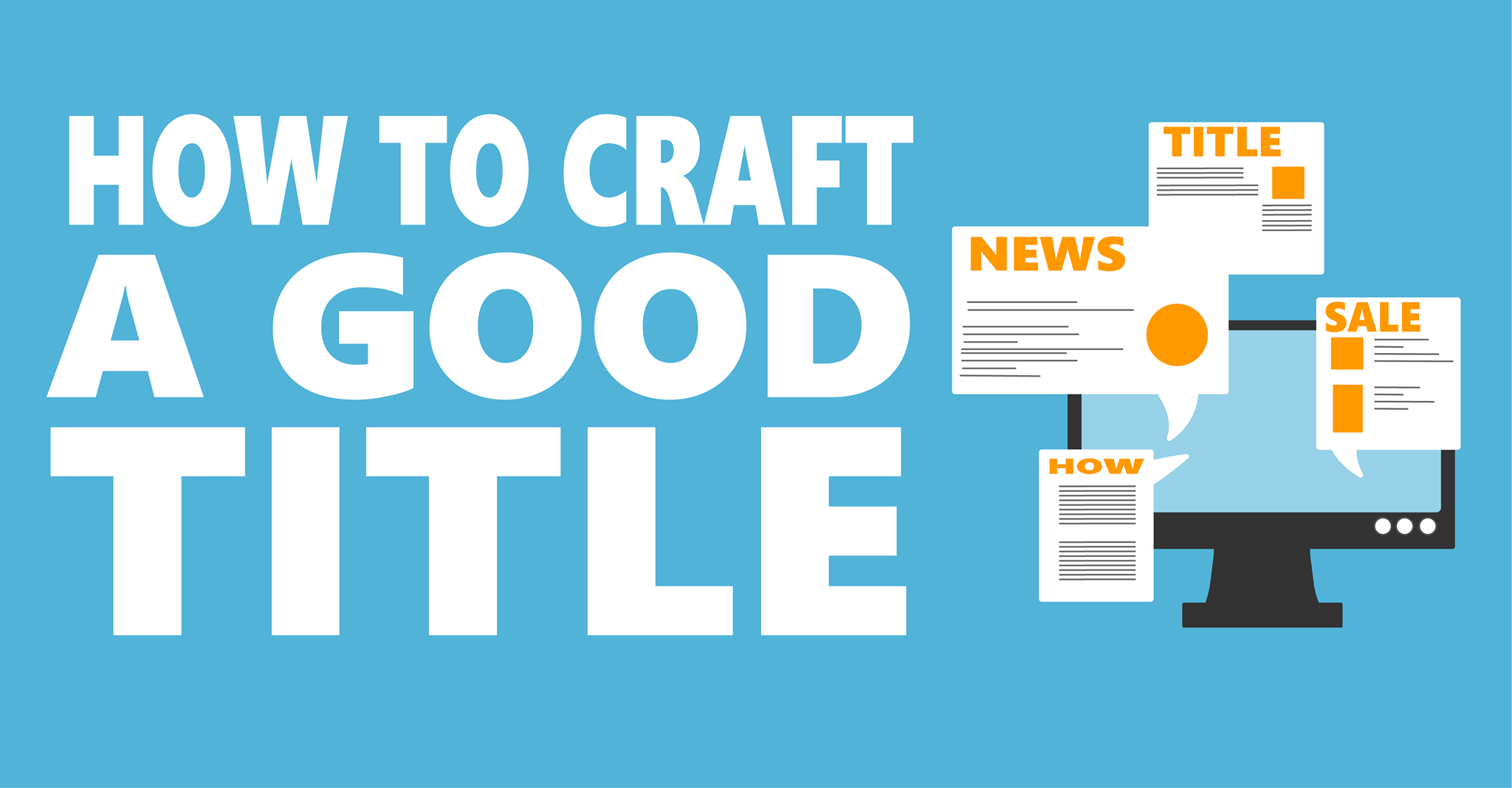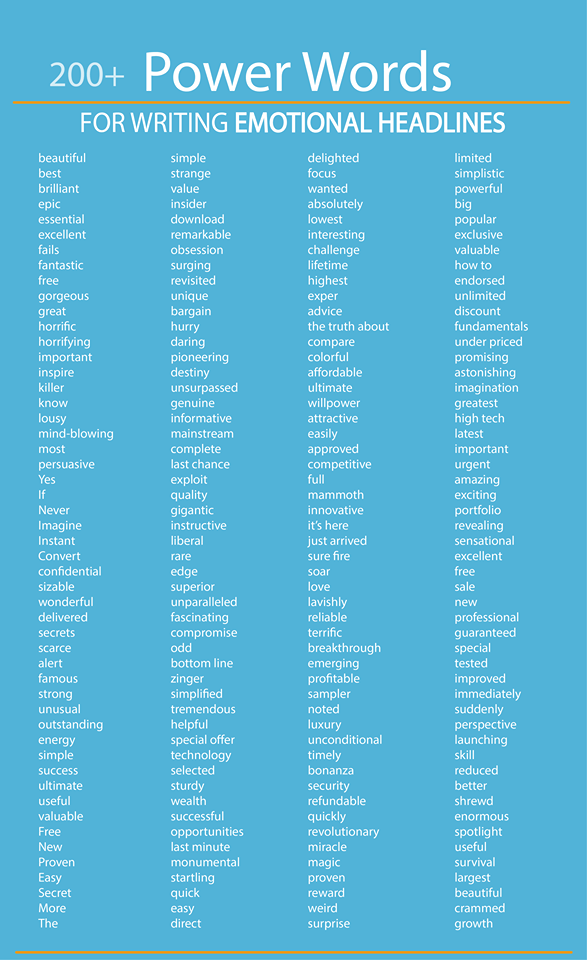
Have you ever tried content writing?
If you have, or if you plan on writing one, you'll probably encounter this dilemma:
"What should the title of my blog be?!" or perhaps "How do I make a good title for my blog?!"
Let's face it.
It's not easy how to make a good title for your blog or article.
In fact, the quality and allure of your blog titles can make or break the traffic your page gets.
If you are serious about getting readers to click through your blog articles, you have got to learn how to craft blog post titles the best way possible.
Because making a good title is one of the pillars of content writing tips.
Well, we've got it covered for you.
Keep reading.
Here are downright effective tips to help you come up with powerful titles that attract more audience and make them digest your words.
Many studies have been made on the best types of headlines that attract the most clicks.
There are specific trends showing what readers usually click on.
Make the most of these proven and tested formulas and see the difference:
This type apparently starts with a number to introduce a list of things readers should know such as #10 Tips to Excel in Your Career or #6 Ways to Prevent Diabetes in Dogs and the like.
People tend to click on this type of title because it imperceptibly exudes substance. It somehow promises delivery of something specific.
The reader will essentially look forward to learning one or two worthwhile tips or steps even if the rest could miss the mark.
Users visit search engines to gain information, especially when they want to know how to do something.
A how-to title directly tells the audience that your article will deliver the most important information to help them learn what they’ve come to look for.
It works because people don’t want to waste time, and if they immediately detect that your headline oozes a guarantee that their question will be answered, they most likely won’t think twice about checking your post out.
Just be sure that the actual content of your blog post delivers the headline’s promise. Not doing could mean a definite disaster.
This headline subtly takes advantage of the popularity of a person or some piece of entertainment to attract clicks.
Depending on the famous person or thing you’re choosing to mention, it could add a hint of fun and excitement to your post.
Some examples include #Business Lessons I Learned from Watching Black Mirror or #10 Love Lessons Learned from Game of Thrones.
This rather unique way of creating titles is great as it makes your blog seem fun and relatable.
Especially if they’re familiar with the famous thing or person you’re touching on, they will most likely click through out of curiosity and amusement.
This kind of headline gives the reader a hint that what you’re about to show them is something only a few people know or have.
These could begin with “Little Known Tips for…” or “The Secret of…”. Try playing on this principle and see how it works out for you.
People have this timeless craving for the rare and limited. This is how promo codes with expiry and limited edition merchandise get successful.
Again, just make sure your content definitely shows unique points that they most likely won’t find elsewhere or at least something not entirely ubiquitous.
This headline gives a guarantee that readers will get a lot of information if they choose to click on your headline.
This includes titles that start with “The Ultimate Guide to…” or “80 Little Things That…”.
Especially if the reader is looking for something particularly comprehensive, this type of headline will work.
If there are not many blog articles covering the topic extensively, you’re also on your way to gaining an edge.
If you have more time or resources to spare on crafting thorough posts, try to give this headline a try.
These are very simple formulas that can instantly make a difference.
Give your headlines some flavor by using the universal approach that always works.

Keyword research is usually done to find out what the audience is looking for and the exact terms they use to key in their searches.
Be sure to integrate this input into your headlines. It helps you make use of the common language that readers use and you’re also giving your blog more SEO value.
Just be sure to avoid forcing your target keywords into the title to the point that it sounds unnatural or awkward. Do this naturally, and it should be good to go.
If you want to verify the search volume of your final title, run it through the Google Keyword Planner.
Here, you can know the range of its average monthly searches, helping you decide whether to go for it or not.
But you have to remember that Google does not require keywords to appear in exact order. The search engine has gone smart enough to assess the intent and subject of the page.
If you’re going for a long-tail keyword for your title, there might be little to no search volume. But that does not mean nobody is searching for it.
If there are people who do a search for this specific keyword, their need is specific and they’re most likely willing to spend more time reading it and hopefully sharing it.
As you may have known, social shares and the time readers spend on the page are actual SEO ranking factors as Google index the page. But that is for another topic.
Just focus on giving readers what they need and capturing their attention with a catchy and SEO-friendly title. Once the value is served, good things follow.
When thinking of a title, one mistake is making it too long. The optimal length to go for is just 9 words or 60 characters maximum.
If you make your title too long, readers may not even read the full tit... Yes, this is how it would look like. Users usually just browse around casually, so you should keep the length in check.
If your goal is for your headline to show up on the search engine results pages, you don’t want it to get cut off. To avoid that, make sure to avoid going beyond the 70-character mark.
While focusing on the length, you should also make sure that it’s enough to convey an information-rich, keyword-optimized, easily understandable, and generally clear text, leading us to the next point.
Bonus: You can use Moz' Title Tag Preview Tool to check how your title would look like on search.
Make sure to steer clear of titles that sound rather vague. Make it a point that in just one glance, any potential reader will be able to grasp what exactly the content is about.
For example, just saying “5 Business Tips” may sound too short and unspecific.
But if you say “5 Tips for New Entrepreneurs to Start Off Strong”, that kind of topic helps readers immediately know what they can expect from your content.
Before people click on anything, they should at least want to know what it’s going to be about, and if your headline does not show that clarity, your click-through rate could suffer.
If you’re thinking that making it a bit vague may add a hint of intrigue and make people more interested, that is totally counterproductive.
You’ll just end up losing opportunities as people scroll past your headline without sparking interest.
Avoid sheer click baits.
Don’t try to just focus on luring people in without meeting the promise your appealing headline displays.
You don’t want to attract clicks only to see your readers disappointed with what they stumble upon.
If your site’s business model makes money based on the number of clicks you get, going this route might make sense, but if you want to establish trust online, this should be a big no-no.
The headline of your article must be as compelling as the actual content of your post. Don’t use the words “blow your mind” if the content you’re planning to make is nowhere near mind-blowing.
Don’t say “A Definite Guide to…” if you intend to write just a short blog post covering only the basics.
If you want to sell the big-time way, make sure to deliver and exert more thought and effort into the meat of the matter.

Research shows that the mechanism of clicking and sharing blog posts is actually based on an emotional decision. Blog titles actually appeal to emotions and thus hold power.
If you want to inspire shares, focusing on this element is crucial. Some terms that help evoke readers’ emotions include delighted, surprising, exclusive, and so on.
Using colorful and descriptive words stir emotions. Using the right words can make or break the appeal of your headline.
For example, look at the similar headlines below and decide which one adds emotion better:
These headlines depend on intrigue, and it’s pretty clear which one could get more clicks. Word choice matters to generate a stronger emotional pull that grabs attention and consequently, clicks.
Here are more powerful words to achieve emotional headlines:

As much as possible, ponder on what you want your audience to feel as they click, and craft your post in a way that sums it all up.
You do not have to strive for making everyone on the web like your headlines. You just have to narrow it down and focus on having your target audience get drawn by them.
Don’t write blog titles just according to your personal preferences or to sound clever. You need to define who your target audience is and just strive to craft headlines that capture their specific interest.
Keep this in mind to avoid straying away.
You can use tools like BuzzSumo to know the type of topics your audience usually engages in. Or you can directly listen to your audience to know what they actually need.
Before writing anything, make sure your target audience has shown interest in them, especially if you’re looking to craft articles that can be shareable on social media.
Now that you know how to do it better, make sure to apply them to your next headlines and get ready to draw more readers in.
After all that has been said, it's good to note that your title is just the tip of the iceberg (your whole content).
And having a good title will make your target audience crash on it *no pun intended*.
Now that you've learned the ways, putting them to use will surely help you a lot on how to make a good title the best way possible.
Cheers.